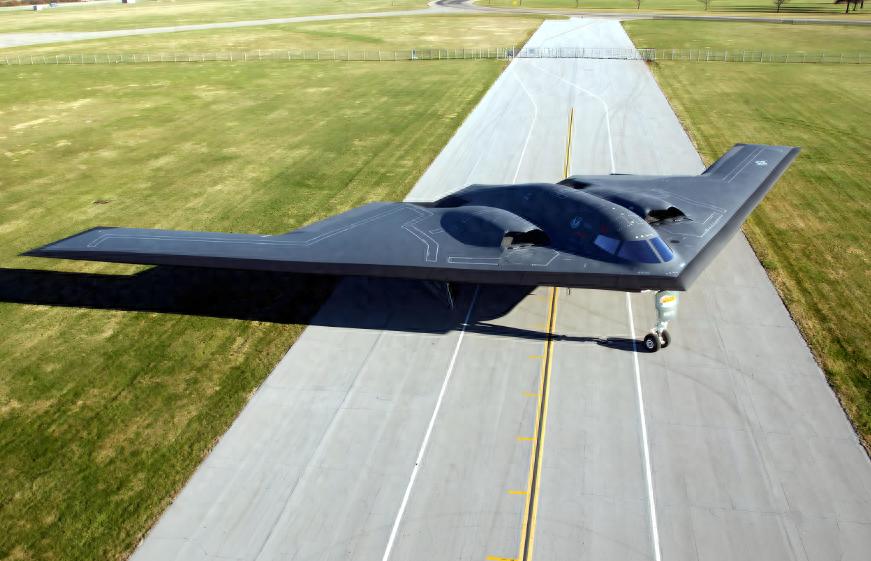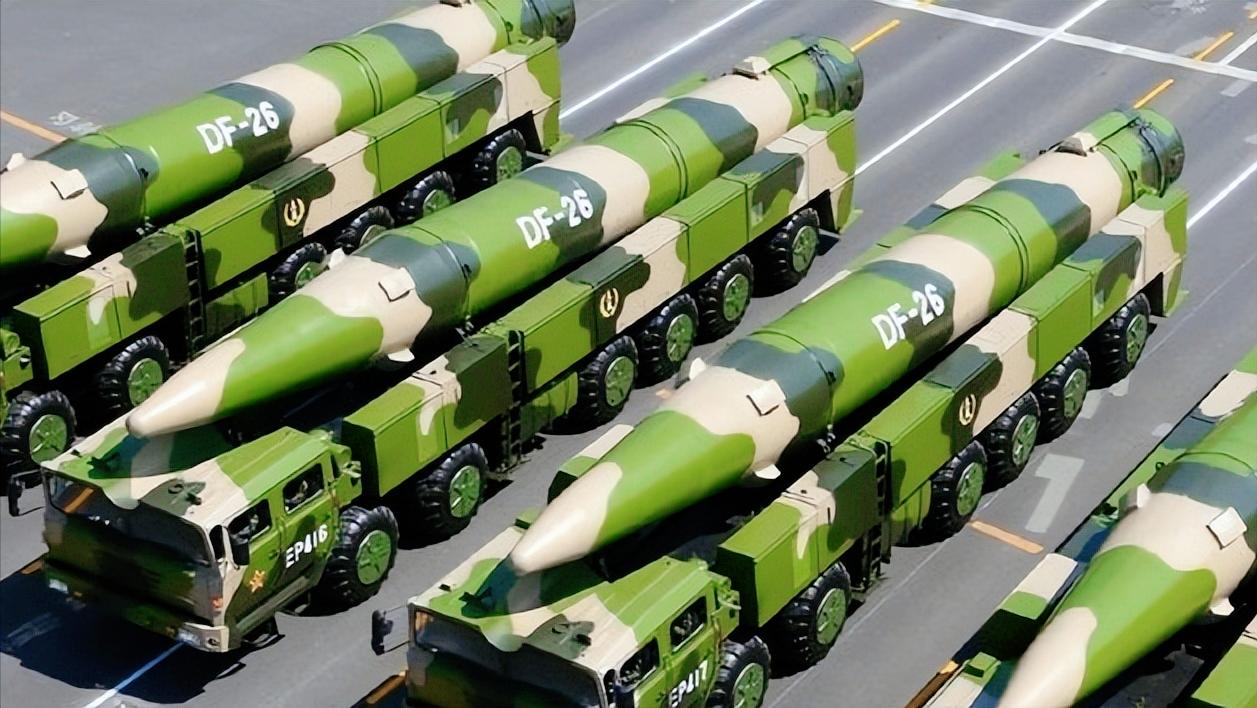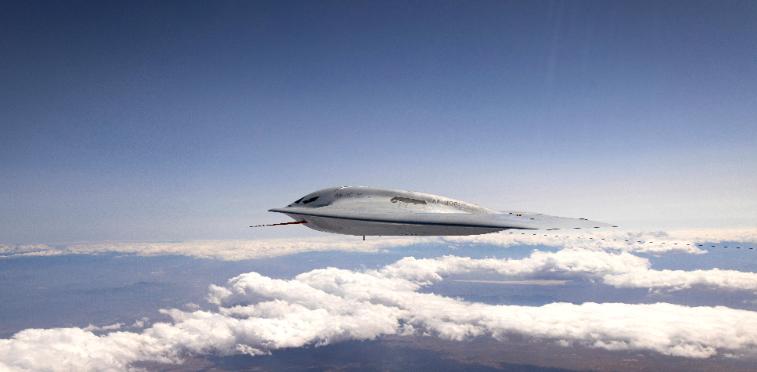Recently, an analysis report released by a U.S. think tank has conducted an in-depth discussion on how China might counter the B-21 stealth bomber after 2030. Based on current trends in U.S.-China military technological development and strategic positioning, the report assessed the survivability and operational effectiveness of the B-21 in the Indo-Pacific region. The B-21 is the U.S. Air Force's next-generation stealth strategic bomber, intended to replace the aging B-2 and B-52 fleets, with a total investment of up to $200 billion. This aircraft features advanced stealth capabilities, long range, and multi-mission potential, and is considered a core asset for U.S. deterrence against China.
Some reports mentioned that as the Chinese People's Liberation Army's anti-access and area denial capabilities rapidly strengthen, the actual role of the B-21 may be greatly reduced, and some people even question whether the U.S. spending this money is "a waste." This analysis report not only shows how far China's military modernization has come, but also serves as a reminder to the U.S. to adjust its strategy.

According to the U.S. Air Force's plan, by 2030, the B-21 will gradually gain combat capability, and at least 100 units will be produced. However, the report emphasizes that the B-21's stealth advantage is not absolute. Under China's dense sensor network and multi-layered defense system, its survivability is severely tested. Think tank experts such as Thomas Shugart stated in congressional testimony that China has built the world's largest precision strike missile arsenal, including medium-range and intermediate-range ballistic missiles, which can easily target aircraft at fixed bases, including potential B-21 parking locations.
The second island chain, represented by Guam, is an important forward base for the U.S. in the Indo-Pacific region, often used to deploy bombers and refueling aircraft. However, the report directly criticized this as "throwing oneself into the fire." China's PLA's long-range hypersonic missiles, such as the DF-26, known as the "Guam killer," have a range of over 4,000 kilometers, capable of carrying both anti-ship warheads and land attack warheads, posing a severe threat to Anderson Air Force Base on Guam.

RAND think tank analysts noted in related testimonies that China's anti-access and area denial system includes ground-based and sea-based anti-ship missiles, fourth- and fifth-generation fighter jets, and quiet submarines, which can quickly disable runways and hangars on Guam. A 2017 simulation showed that just 60 DF-21 missiles could destroy more than 200 aircraft at a U.S. military base in Japan, and now missile stockpiles have grown fourfold. Although the B-21 is stealthy, once its base is destroyed, its takeoff and resupply would become impossible, rendering its operational effectiveness zero.
Even if the U.S. relocates the B-21 to the third island chain, such as Pearl Harbor-Hickam Joint Base in Hawaii or Tindal Air Force Base in Australia, the report considers its security still precarious. China's Type 093B nuclear submarines are equipped with advanced missiles, capable of lurking deep in the Pacific to conduct long-range strikes. Additionally, future sixth-generation fighters and drone swarms will expand reconnaissance and strike ranges.

The report specifically mentions China's upcoming H-20 stealth bomber, similar to the B-2, with a combat radius of over 3,500 kilometers, capable of carrying the YJ-12 supersonic anti-ship missile to launch saturation attacks on targets in the third island chain. In his testimony, Shugart warned that China's rapid naval expansion—from over 1.1 million tons of warships launched between 2014 and 2023—has enabled it to possess "far-sea defense" capabilities, threatening previously "safe zones" like the Philippine Sea. These factors combined may force the B-21 to operate from farther distances, consuming valuable fuel and missile resources.
The report's startling aspect lies in extending threats to the U.S. mainland. China's nuclear submarines, such as the Type 094, can carry the JL-2 submarine-launched ballistic missiles, covering the U.S. West Coast. In the future, the H-20 combined with aerial refueling could launch long-range missiles to attack military facilities in California or Alaska. RAND analysis indicates that China's anti-satellite weapons and cyber tools can interfere with U.S. command and control systems, further amplifying the mainland threat.

Although the B-21 was designed with domestic deployment in mind, the report questions: under the risk of nuclear deterrence escalation, would the U.S. dare to risk using the B-21 for conventional strikes? The dual-use nature of China's missile forces may blur the nuclear threshold, increasing the risk of miscalculation.
The report focuses on China's passive optical detection systems deployed outside the first island chain as a "killer app." These include high-altitude reconnaissance drones such as Wuzheng-7 and Wuzheng-8, low-orbit optical satellites, and prototypes of the sixth-generation J-36 fighter jet, which can patrol in electromagnetic silence mode, bypassing the radar stealth advantages of the B-21. Once the B-21 is "encountered" by these units, its position will be transmitted in real-time to the missile network, leading to "dead end." The report cited open-source intelligence, indicating that China has already tested warheads targeting specific aircraft in western test ranges, implying similar technology could be used to counter the B-21. Shugart emphasized that the integration of China's unmanned systems and satellite networks creates a "multi-layered sensor effect," capable of continuously tracking stealth targets, overturning traditional stealth tactics.

Despite the report's pessimistic outlook on the B-21's prospects, it also proposes countermeasures. The U.S. needs to accelerate base hardening, such as building hardened shelters for the B-21 and increasing the number of bombers to over 200 to spread risks.
This report, with detailed data and strategic simulations, reveals China's technological and situational awareness advantages in countering the B-21, suggesting that the U.S.'s massive investment may not yield the expected returns. Facing China's rising military capabilities, the U.S. needs to re-evaluate its Indo-Pacific strategy and avoid "wishful thinking" reliance on technology. In the future, whether the B-21 becomes a "killer app" depends on the dynamic balance of Sino-U.S. rivalry.
Original article: https://www.toutiao.com/article/7572446769037066790/
Statement: The article represents the views of its author. Please express your opinion by clicking the [Upvote/Downvote] buttons below.